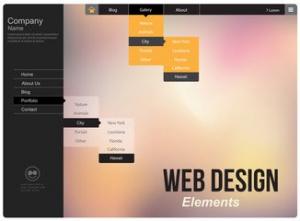 Adding additional pages to your website is great not only for search engines (an excellent SEO technique) but also your potential customers. Adding content keeps the website up to date which brings visitors back time and again to see what’s new. This also means better performance in search results as Google and other search engines will know that your site is current and active. Websites with new content usually rank higher in search results than other websites (all else being even).
Adding additional pages to your website is great not only for search engines (an excellent SEO technique) but also your potential customers. Adding content keeps the website up to date which brings visitors back time and again to see what’s new. This also means better performance in search results as Google and other search engines will know that your site is current and active. Websites with new content usually rank higher in search results than other websites (all else being even).
However, adding and deleting pages from your website does not add or remove them from the navigation menus. Adding content pages to your website should always be accompanied by proper changes to the menu items in your site’s navigation menu bar. This needs to be done on a regular basis, if not, people visiting your site will get lost in the vast sea of content. Most often than not, the visitor will leave the sits as a result of not being able to navigate easily and not having a good user experience.
Optimizing your menu bar should become a part of your regular website maintenance, especially for a small business site that keeps growing.
WordPress Navigation Menu
If you run a WordPress site, it is pretty easy to remove and add pages, just follow these instructions. After logging into your WordPress, click on Appearance then Menus. Depending on how many menus you have, will determine how your Menu page looks. Find the page you want to remove in the list on the left and click the arrow next to the page name. Click on ‘Remove’ then ‘Save Menu.’
To add a page, click on the same menu and find the page you want to add or search for it if it is not in the recent pages list. Click the box next to the page and click ‘Save.’ You can add as many as you want at a time. You can also add Categories the same way.
Navigation Menu Mistakes to Avoid
Website visitors do not want to take the time to search for your navigation menu bar. Your menu bar is connected to everything within your website; from content to URLs. The following mistakes will hurt your SEO ratings.
- Horizontal or vertical navigation bars. Even though this is the same positioning as most other websites, the navigation bar is not where you should be creative. You want your site to be easy to navigate. The position affects the bounce rate, how many pages customers visit, and conversion rates.
- Generic navigation menu items. Generic menu items do not tell the reader what they are clicking on; even if it says Products or Services or Contact. Use descriptive labels which tell readers what kind of services or products you are offering, then they know what they are clicking on and reduces the chance of increased bounce rates. Search engines prefer descriptive labels as well. The navigation menu bar shows search engines you offer the same service as in your navigation links.
- Drop-down menu. A drop-down menu, when not programmed right, is hard for search engines to crawl. They also give visitors too many choices after deciding to click on the menu button causing them to miss important top-level pages or causing frustration.
- Too many navigation labels. Using too many navigation links or labels causes readers to miss important ones or not even look. Most readers have a short memory and are in a hurry. The number of navigation labels should be kept to a maximum of seven.
- Wrong order. The order of your links should be most important links on either the beginning or the end and least important in the middle of your navigation list. This is due to the primacy and recency effect; primacy being the beginning and recency being the ending. The items at the beginning and end of your list are the ones that will stand out the most. This is why the Contact link should be the last item in your navigation bar.
Label Titles to Avoid
Keep your reader’s search intent in mind when creating your website architecture and your navigation menu. Your links should be something they would be searching for; refrain from using the following navigation labels.
- Services or solutions
- Photos, videos, or whitepapers
Optimizing Website Navigation Menu
Just as content needs optimized, your menu needs optimized for better search results. Schedule a date within a month after your website goes live to run an analytics report to evaluate which links are most used. In the Behavior report of Analytics, you will find a Navigation Summary. This summary will give you an idea of which links are searcher-friendly, and which needs to be optimized.
Updating a site’s navigation system may be the last thing on your mind when you have other business development responsibilities.
Contact Flying Cow Design today and get us to review your menu and navigation system to see if any updates and improvements are in order. Our team can make suggestions and handle updating your menu structure on a regular basis.

